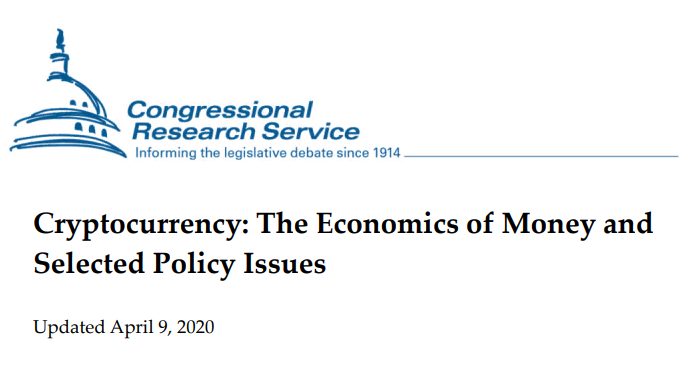
Introduction
In 2008, an unknown computer programmer or group of programmers using the pseudonym
Satoshi Nakamoto created a computer platform that would allow users to make valid transfers of
digital representations of value.
The system, called Bitcoin, is the first known cryptocurrency. A
cryptocurrency is digital money in an electronic payment system in which payments are validated
by a decentralized network of system users and cryptographic protocols instead of by a
centralized intermediary (such as a bank).
Since 2009, cryptocurrencies have gone from little-known, niche technological curiosities to
rapidly proliferating financial instruments that are the subject of intense public interest.
Recently,
they have been incorporated into a variety of other financial transactions and products. For
example, cryptocurrencies have been sold to investors to raise funding through initial coin
offerings (ICOs),
and the terms of certain derivatives are now based on cryptocurrencies.
Some
government central banks have examined the possibility of issuing cryptocurrencies or other
digital currency.
Media coverage of cryptocurrencies has been widespread, and various observers
have characterized cryptocurrencies as either the future of monetary and payment systems that
will displace government-backed currencies or a fad with little real value.
When analyzing the public policy implications posed by cryptocurrencies, it is important to keep
in mind what these currencies are expressly designed and intended to be—alternative electronic
payment systems. The purpose of this report is to assess how and how well cryptocurrencies
perform this function, and in so doing to identify possible benefits, challenges, risks, and policy
issues surrounding cryptocurrencies. The report begins by reviewing the most basic
characteristics and economic functions of money, the traditional systems for creating money, and
traditional systems for transferring money electronically. It then describes the features and
characteristics of cryptocurrencies and examines the potential benefits they offer and the
challenges they face regarding their use as money. The report also examines certain risks posed
by cryptocurrencies when they are used as money and related policy issues, focusing in particular
on two issues: cryptocurrencies’ potential role in facilitating criminal activity and concerns about
protections for consumers who use these currencies. Finally, the report analyzes cryptocurrencies’
impact on monetary policy and the possibility that central banks could issue their own,
government-backed digital currencies.
Where this report examines the regulation of cryptocurrencies, it generally focuses on how they
are regulated in the United States. For information on the regulatory approaches of other
countries, see CRS Report R45440, International Approaches to Digital Currencies, by Rebecca
M. Nelson.
The Functions of Money
Money exists because it serves a useful economic purpose: it facilitates the exchange of goods
and services. Without it, people would have to engage in a barter economy, wherein people trade
goods and services for other goods and services. In a barter system, every exchange requires a
double coincidence of wants—each party must possess the exact good or be offering the exact
service that the other party wants.
Anytime a potato farmer wanted to buy meat or clothes or
have a toothache treated, the farmer would have to find a particular rancher, tailor, or dentist who
wanted potatoes at that particular time and negotiate how many potatoes a side of beef, a shirt,
and a tooth removal were worth. In turn, the rancher, tailor, and dentist would have to make the
same search and negotiation with each other to satisfy their wants. Wants are satisfied more
efficiently if all members of a society agree they will accept money—a mutually recognized
representation of value—for payment, be that ounces of gold, a government-endorsed slip of
paper called a dollar, or a digital entry in an electronic ledger.
How well something serves as money depends on how well it serves as (1) a medium of
exchange, (2) a unit of account, and (3) a store of value. To function as a medium of exchange, the
thing must be tradable and agreed to have value. To function as unit of account, the thing must act
as a good measurement system. To function as a store of value, the thing must be able to purchase
approximately the same value of goods and services at some future date as it can purchase now.
Returning to the example above, could society decide potatoes are money? Conceivably, yes. A
potato has intrinsic value (this report will examine value in more detail in the following section,
“Traditional Money”), as it provides nourishment. However, a potato’s tradability is limited:
many people would find it impractical to carry around sacks of potatoes for daily transactions or
to buy a car for many thousands of pounds of potatoes. A measurement system based on potatoes
is also problematic. Each potato has a different size and degree of freshness, so to say something
is worth “one potato” is imprecise and variable. In addition, a potato cannot be divided without
changing its value. Two halves of a potato are worth less than a whole potato—the exposed flesh
will soon turn brown and rot—so people would be unlikely to agree to prices in fractions of
potato. The issue of freshness also limits potatoes’ ability to be a store of value; a potato
eventually sprouts eyes and spoils, and so must be spent quickly or it will lose value.
Cryptocurrency: The Economics Of Money And Selected Policy Issues by Congressional Research Service




